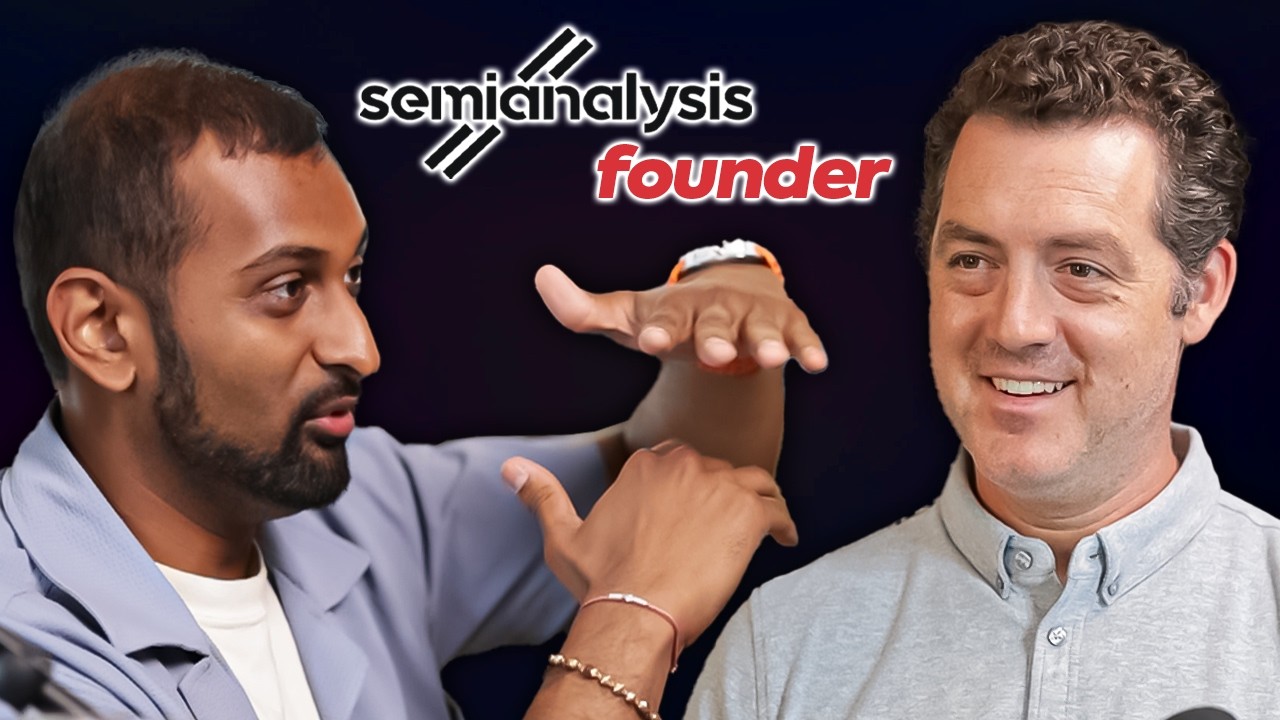Dylan Patel critiques the inefficiencies in GPT-4.5 and highlights organizational and strategic challenges faced by major AI players like Meta and Apple, while emphasizing OpenAI’s leading position and complex partnership with Microsoft in the race toward superintelligence. He also compares hardware competitors Nvidia and AMD, discusses emerging efforts like XAI and Grok, and underscores that leadership and strategy are as vital as technical innovation in shaping the future of AI.
In this insightful discussion, Dylan Patel delves into the current state and future trajectory of AI development, focusing on major players like OpenAI, Meta, Apple, and emerging competitors such as XAI. He critiques GPT-4.5, highlighting its overparameterization and inefficiency due to insufficient data scaling, which led to memorization rather than true generalization. Patel emphasizes that breakthroughs like reasoning and synthetic data generation have proven more effective than merely increasing model size. He also explains the organizational challenges at Meta, where despite having top talent, the lack of strong technical leadership and coherent decision-making has hindered the development of groundbreaking models like Llama 4 and the delayed Behemoth.
Patel sheds light on Meta’s aggressive talent acquisition strategy, including the purchase of Scale AI primarily to onboard key figures like Alexander Wang, signaling a strategic pivot towards chasing superintelligence. He contrasts this with Apple’s more conservative and secretive approach, which struggles to attract top AI researchers and relies heavily on in-house chip development rather than leveraging Nvidia’s GPUs, partly due to past conflicts. Patel argues that Apple’s focus on on-device AI, while beneficial for privacy and latency in limited scenarios, is less practical for the complex, data-intensive AI applications that dominate the cloud, where most valuable AI workloads reside.
The conversation also explores the complex relationship between OpenAI and Microsoft. Patel explains the unusual and intricate partnership terms, including profit-sharing and intellectual property rights, which grant Microsoft significant control over OpenAI’s innovations up to the point of achieving AGI or superintelligence. He notes the recent easing of Microsoft’s exclusivity on compute resources, allowing OpenAI to diversify its infrastructure providers, which reflects tensions and practical challenges in scaling AI compute needs. Despite these complexities, Patel acknowledges OpenAI’s leading position in AI breakthroughs and capital raising, albeit with a long path before profitability.
On the hardware front, Patel compares Nvidia and AMD’s positions in the AI chip market. While AMD is making strides with competitive hardware and aggressive cloud partnerships, Nvidia maintains a dominant edge due to superior chip architecture, networking capabilities, and a robust software ecosystem that simplifies AI development. However, Nvidia’s recent move to enter the cloud service market directly has upset some cloud providers, potentially opening opportunities for AMD to gain market share. Patel predicts AMD will grow but not surpass Nvidia’s leadership in the near term.
Finally, Patel discusses emerging AI efforts like Elon Musk’s XAI and Grok models, acknowledging the hype but noting that fundamentally, most companies follow similar approaches centered on large transformer models and reinforcement learning. He touches on the broader economic implications of AI, including potential job displacement balanced by increased productivity and changing workforce dynamics. Patel concludes by betting on OpenAI as the most likely to achieve superintelligence first, followed by Anthropic and then a competitive race among Google, Meta, and others, emphasizing that organizational leadership and strategic focus are as crucial as technical talent in this high-stakes AI race.
